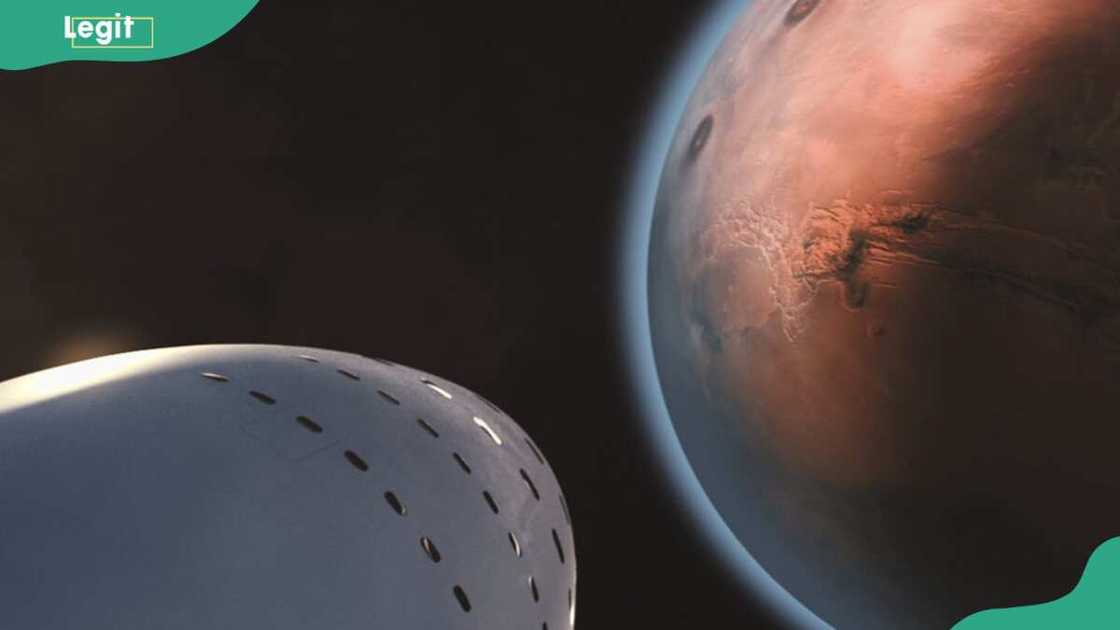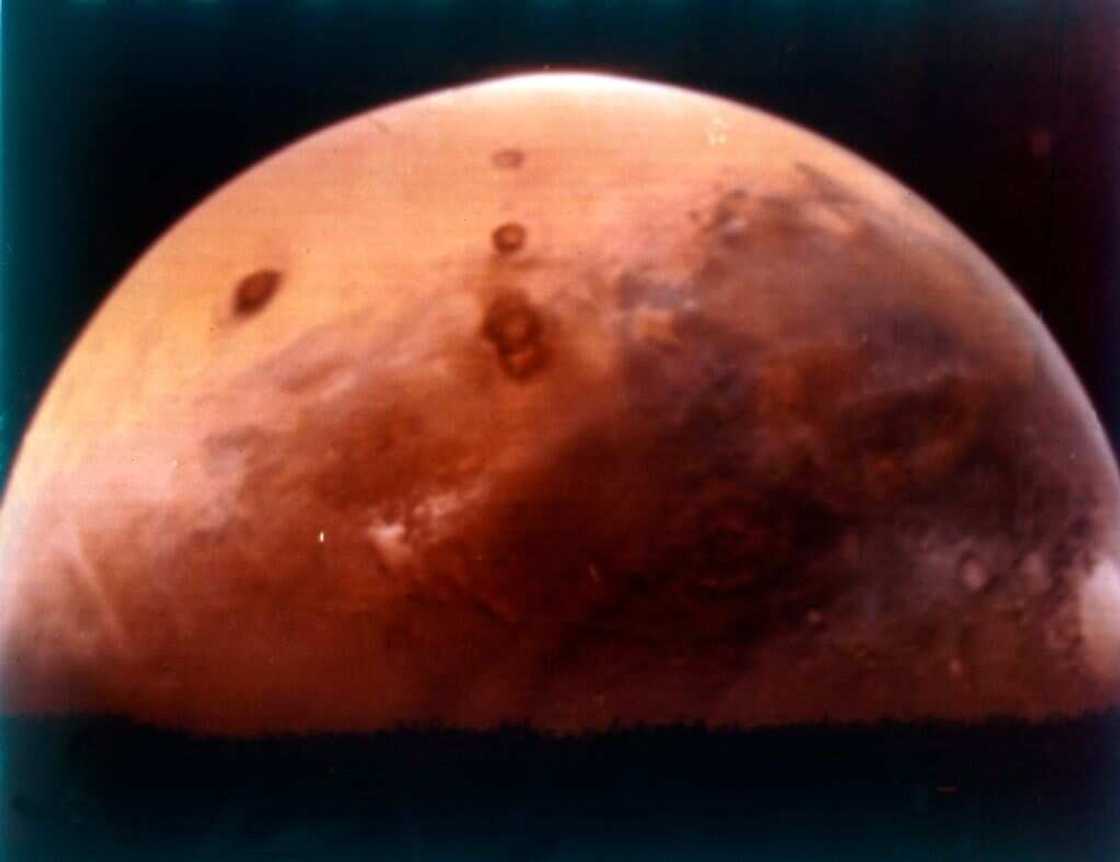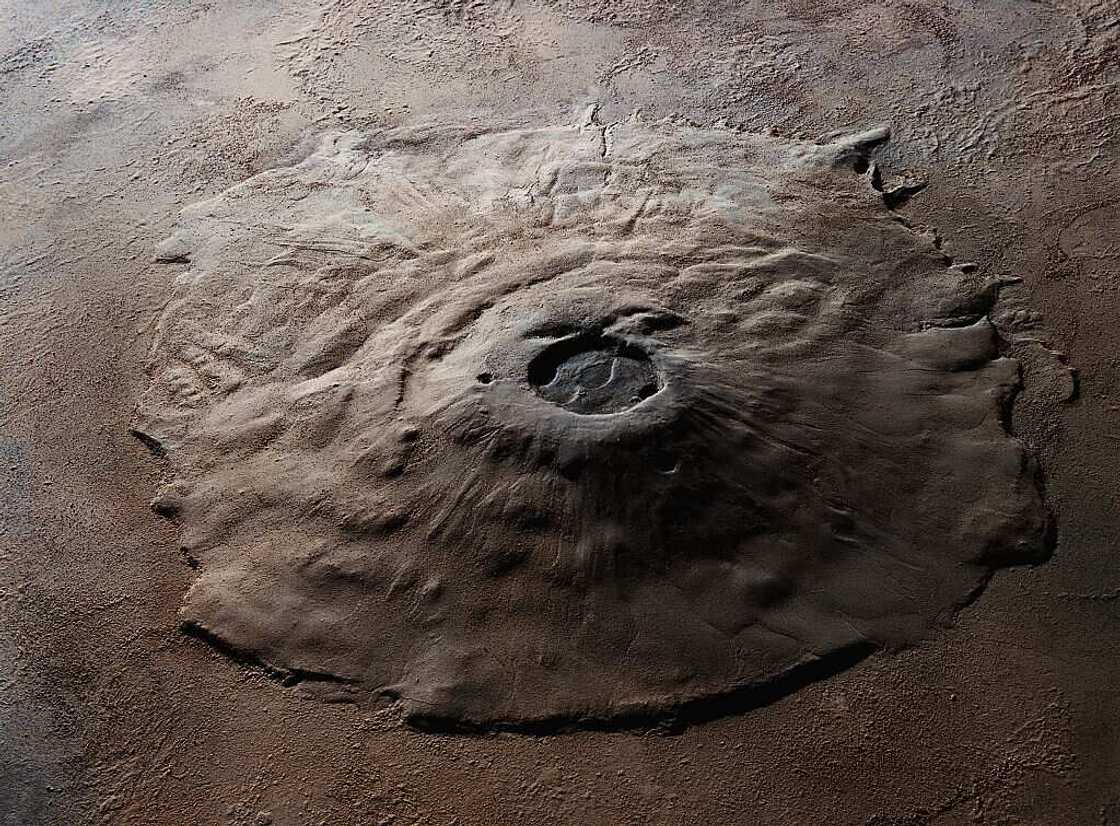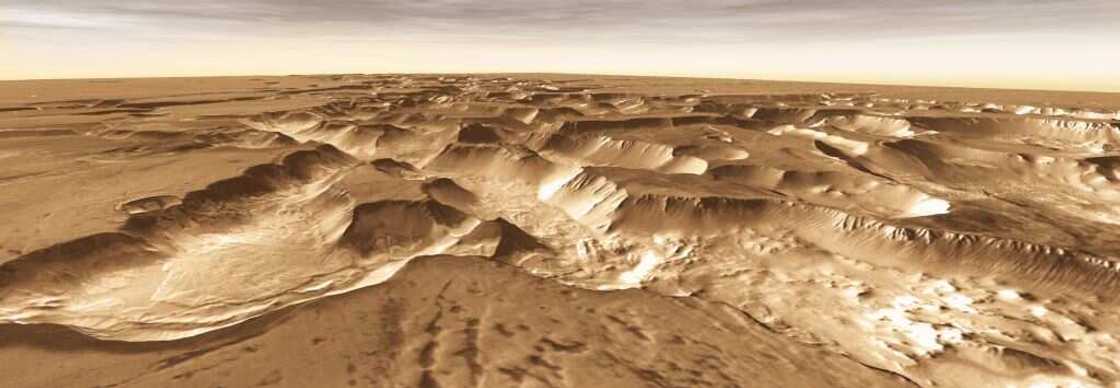22 fun facts about Mars: interesting mysteries of the Red Planet
Scientists and explorers have been studying space for years, and much has been discovered. However, there are still more intriguing and mysterious things that are still unknown. One of the discoveries is the planet Mars. Uncover some fun facts about Mars that make it unique.

Source: UGC
TABLE OF CONTENTS
- 22 fun facts about Mars
- 1. Mars appears reddish
- 2. The planet is named after the Roman god of war
- 3. It is a terrestrial planet
- 4. It has two moons
- 5. It experiences violent dust storms
- 6. It is the fourth planet from the sun
- 7. A year has 687 days on Mars
- 8. It is smaller than Earth
- 9. Borealis Basin
- 10. A day is slightly longer on Mars than Earth
- 11. It's an extremely cold planet
- 12. Mars has the tallest mountain in the solar system
- 13. Its poles are known as the Martian ice caps
- 14. The tilt on the axis is 25 degrees
- 15. Mars has weak gravity
- 16. There is no life on Mars
- 17. Mars may look like Saturn millions of years from now
- 18. Mars is around 4.5 billion years old
- 19. Mars has the largest canyon in the solar system
- 20. It can easily be seen in the sky
- 21. It has little oxygen
- 22. The planet was first seen by Galileo
- Why is Mars so interesting?
- What makes Mars unique from other planets?
Mars has continued to attract the interest of many scientists and explorers around the globe. Although the planet looks more like Earth, it has numerous bizarre and fascinating differences. Conspiracy theories, fictional stories, and known facts have marred the red object in space. Here is a list of fun facts about Mars to help you understand the planet better.
22 fun facts about Mars
Mars is among the planets that have attracted an interest among ordinary people and scientists. The planet is full of many interesting facts, although there is still much to study. Below is a list of fun facts about Mars that will blow your mind.
1. Mars appears reddish
The planet is also known as the Red Planet because its soil, rocks and dust are reddish. The colour comes from the iron oxide covering the surface. People from Egypt also named the planet Her Desher, which means "the red one."
2. The planet is named after the Roman god of war
The planet was named by ancient Romans after the Roman god of war and the agricultural guardian. The name is derived from the Latin word Mārs. The name came about because of its colour.
3. It is a terrestrial planet
It is considered a terrestrial planet because of its hard and rocky surface. The northern side is covered by flat plains, while the southern side is covered by ridges and craters. The planet also has many canyons and plains believed to be caused by water erosion. The planes also contain minerals containing metals, oxygen, and silicon.
4. It has two moons
One of the fun facts about Mars for kids is that it has two moons, Phobos and Deimos. These moons are named after horses that pull Mars, the Roman god of war. They are irregularly shaped and small. The moons are similar to asteroids, and their unique appearance has fueled many scientific theories about their origin.
5. It experiences violent dust storms
The celestial body experiences dust storms, which are powered by the sun. The dust covers the planet entirely for weeks and sometimes months. While the dust storm may not strand an explorer, it can pose challenges as it coats everything on its way, including machinery. This makes life on Mars challenging.
6. It is the fourth planet from the sun

Source: Getty Images
Mars is number four in the solar system's arrangement of planets in relation to the sun. It is about 227,936,637 km (141 million miles) from the sun. Scientists estimate that it would take nine months or 300 days to travel to Mars from Earth.
7. A year has 687 days on Mars
The celestial body takes longer to orbit the sun because it is further from it. The planet also rotates slower than Earth, prolonging the days. A year on Mars lasts 669.6 solar days, equivalent to 687 days.
8. It is smaller than Earth
The celestial body is smaller than Earth. Its radius is about 2,106 miles (3,390 kilometres), making it the second smallest planet and half the size of Earth.
9. Borealis Basin
The largest crater on the Red Planet is the Borealis Basin. This massive basin covers 40% of the planet's northern part, about 8,500 kilometres (5,300 miles) from end to end, and is four times bigger than Hellas Basin on the southern side.
10. A day is slightly longer on Mars than Earth
A day on Mars is longer than Earth's: 24 hours, 37 minutes, and 22 seconds. The planet's solar day is 24 hours, 39 minutes, and 35 seconds.
11. It's an extremely cold planet
Mars is very cold due to its position from the sun. There is also no other source of heat closer to the planet. Temperatures on Mars can get as high as 70°F, and they can get to as low as -225°F at the north and south poles.
12. Mars has the tallest mountain in the solar system

Source: Getty Images
One of the interesting facts about Mars is the tall Olympus Mons mountain. This is the tallest mountain in the solar system. Olympus Mons stands at an impressive 13.6 miles (72,000 ft) high. Its base is about 600 kilometres (370 miles), making Earth's tallest mountain, Mount Everest, look like a dwarf.
13. Its poles are known as the Martian ice caps
Like Earth, Mars has poles, known as Martian ice caps. The polar ice caps are covered in frozen carbon dioxide (dry ice). Like Earth, its poles are located in its northern and southern parts, with lower temperatures.
14. The tilt on the axis is 25 degrees
The planet tilts at a 25-degree axis, just like Earth. This means it has seasons like the Earth. This is experienced as different parts of Mars experience the sun at various times during its orbit. The longest season on the sphere is spring, and the shortest is autumn.
15. Mars has weak gravity
Unlike Earth's gravity, Mars' is weaker. This means one can jump higher or through an object further up on Mars than on Earth. Its gravity is 37% less than that of Earth. Objects' weights are also much lighter there when compared to Earth.
16. There is no life on Mars
No evidence shows there is life on the celestial body. However, it is considered the planet that could support life compared to other planets. Scientists believe they found a water ice supply under the surface that could support life.
17. Mars may look like Saturn millions of years from now
It has been predicted that Mars will look like Saturn many years from now. Notably, scientists predict that in about 40 million years, Phobos will be ripped apart by the gravitational forces creation of a ring.
18. Mars is around 4.5 billion years old
Among interesting facts about Mars is that it is 4.5 billion years old. It is believed to have been formed when gravity pulled swirling dust and gas together. The planet experienced meteor impacts, erosion, water oceans and valley formation.
19. Mars has the largest canyon in the solar system

Source: Getty Images
Valles Marineris is a canyon system on Mars. It is the largest canyon system in the solar system as a whole. Valles Marineris is 10 times longer, 20 times wider, and five times deeper than the Grand Canyon.
20. It can easily be seen in the sky
Mars is one of the three celestial bodies easily seen from the Earth. The other two are Venus and Jupiter. Their spotting is made easy due to their bright colours. Mars, being reddish, can be spotted with the naked eye on a day with a clear sky without binoculars.
21. It has little oxygen
Mars has little oxygen, about 0.174 per cent of the atmosphere. Carbon dioxide is the largest portion of the air on Mars, 95 per cent or 500 more than oxygen. This means humans cannot survive on Mars without wearing spacesuits with oxygen outside.
22. The planet was first seen by Galileo
Galileo Galilei is one of the most famous Italians. He was the first human to spot Mars through a telescope in 1610. The observation showed a reddish disk that grew bigger and smaller at different times of the year.
Why is Mars so interesting?
Like any planet in the solar system, Mars is fascinating and bizarre. The Red Planet is the only planet believed to have had life in the solar system.
What makes Mars unique from other planets?
The celestial body is unique in many ways, including:
- It is reddish due to the high levels of iron ore.
- It is home to the highest volcano, Olympus Mons.
- It is the second smallest planet in the solar system.
- It is one of the few planets seen from Earth with the naked eye.
Space is full of mystery and possibility. There is a lot that is still unknown about the solar system. Mars is one of the nine planets in the solar system, and it is full of fascinating facts. And above are some fun facts about Mars to help you understand it better.
Legit.ng published an article about fascinating facts about the ocean. The Earth is covered by 71 per cent water, and the oceans contain 96.5 per cent of that water. Scientists say there have been more explorations in space than in the oceans, which means there are unimaginable discoveries yet to be made in the oceans.
The world has five oceans: the Pacific, Atlantic, Indian, Antarctic, and Arctic. Many people are not conversant about what happens in the ocean. Oceans are home to millions of organisms, animals, and plants. Discover some fascinating facts about the ocean you may not know in this piece.
Source: Legit.ng


